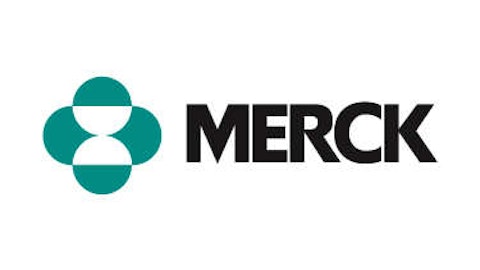A spate of 10 biotechs went public this year, raising over $725 million. As one banker put it, this is a sector “where investors take binary risks, and investor willingness to take on additional risk is picking up.” However, IPO investment is risky business, and one needs to consider who makes the most money – the company, the investor or some third party who buys up a struggling IPO.
A changing scene
A classic example is that of the 2011 acquisition of Inspire by Merck & Co., Inc. (NYSE:MRK). $430 million was considered a great offer – at $5 a share, it represented a 26% premium to Inspire’s share price at that time. However, it did not cover the amount spent by Inspire to develop its pipeline.

In 2010 and 2011, the biotech IPO market was almost dead. Plexxikon, a drug discovery company, was forced to sell itself to Japan’s Daiichi Sankyo after the former’s IPO did not evince any investor interest, although it had an impressive candidate for treatment of melanoma and a strong management team.
But there is renewed investor interest in small biotech companies now. One reason is that last year, the FDA approved the highest number of drugs (39) in over a decade. Another possible reason could be that year to date, the NASDAQ Biotechnology index has outperformed the sluggish S&P 500.

The most recent IPO announcement comes from Agios Pharmaceuticals, going up for $86 million. Earlier there were Epizyme Inc (NASDAQ:EPZM), Tetraphase Pharmaceuticals Inc (NASDAQ:TTPH), and Enanta Pharmaceuticals Inc (NASDAQ:ENTA), which all went public and started trading earlier this year.
A risky gamble
Five of the ten IPOs this year are trading above their offer prices. In June first week, Epizyme Inc (NASDAQ:EPZM), with two candidates in clinical trials, went public at $15 a share. The stock touched $30.86 in a single day, and now trades at $23.82.
However, regardless of the decent returns from biotech IPOs in 2013, generally IPOs are not good for your portfolio — at least not for the first year of their trading. BusinessWeek studied 25 of the biggest IPOs of 2010 and 2011 with the biggest opening trading pops. It found (at that time) that 20 of them had fallen since then and were trading below their opening price – many had fallen 50%.
Biotech is no exception to the rule. Only about 50% of the biotech IPOs of 2011 are up since their debuts, which is not exactly an optimistic investing scenario.
Some lesser-known facts
Small biotech companies excel at discovering and developing new drugs, while Big Pharma tries to acquire them as those drugs progress towards FDA approvals. However, these small biotech companies spend far too much money on drugs that seldom get to the market. When a big biotech acquires such a smaller one, you need to see whether the premium price it’s offered covers the smaller company’s cost of product development.
Consider Adolor’s takeover in 2011 by Cubist Pharmaceuticals Inc (NASDAQ:CBST). At a premium of 143%, it appeared good; however, it was actually a bad deal for investors, because Adolor was getting only $221 million against the $530 million it had spent developing its product portfolio.
Another recent example: In September 2012, shareholders of Allos Therapeutics readily agreed to a $206 million takeover offer from Spectrum Pharmaceuticals, Inc. (NASDAQ:SPPI), disregarding its $565 million in shareholder equity.
This tells us that in general, the acquiring company always wins – often at the cost of the investor.
The bottom line
Biotechnology is today a pick-me-up sector; companies without a single approved drug are having a dream start this year.
Investors are betting on “encouraging” early and late stage results, talking about sure cures for till-now incurable diseases like cancer and hepatitis C infection, and disregarding the reality that almost 80% to 90% of drugs fail. They fail to realize that they are betting on the one out of five drugs that will probably make it to the market. Whether or not it turns out to be a blockbuster drug is an entirely different matter altogether.
Agios Pharmaceuticals, for example, is now trying to raise cash through the IPO route after having received funding from venture capital funds and Celgene Corporation (NASDAQ:CELG), but for a drug platform that has still to undergo testing in a clinic.
Another kind of trouble for early biotech IPOs is timing. Prosensa has an interesting drug candidate for Duchenne muscular dystrophy that is in Phase III trial right now. Based on that candidate, it recently made an IPO offer worth $60 million. However, Sarepta Therapeutics Inc (NASDAQ:SRPT) has a rival drug for DMD that it is trying to get accelerated approval for from the FDA. If that happens, Prosensa’s IPO will suffer.
Conclusion
The odds are against early investors. Even in the eventual situation of a takeover, the price paid is in reference to the stock price and not always commensurate with the amount spent for developing a drug/pipeline. In my opinion, the very fact that a biotech company needs to raise money from the public instead of getting private funding should be reason enough to raise doubts in your mind.
Dr. Kanak Kanti De has no position in any stocks mentioned. The Motley Fool recommends Cubist Pharmaceuticals Inc (NASDAQ:CBST). Kanak is a member of The Motley Fool Blog Network — entries represent the personal opinion of the blogger and are not formally edited.
The article Don’t Invest in Biotech IPOs Until You Read This originally appeared on Fool.com and is written by Dr. Kanak Kanti De.
Copyright © 1995 – 2013 The Motley Fool, LLC. All rights reserved. The Motley Fool has a disclosure policy.




